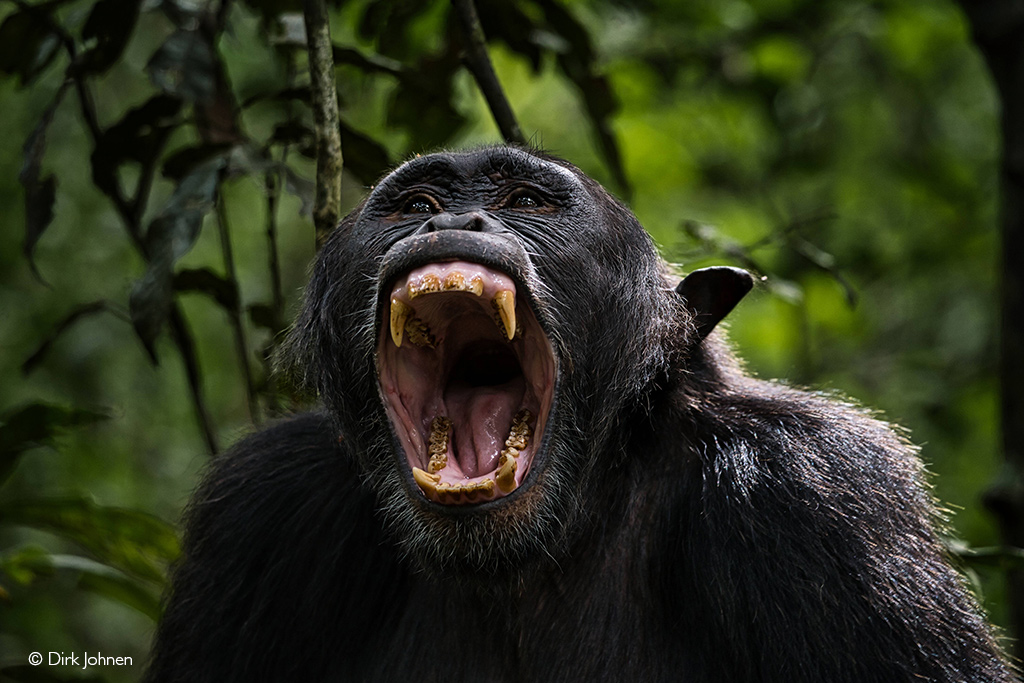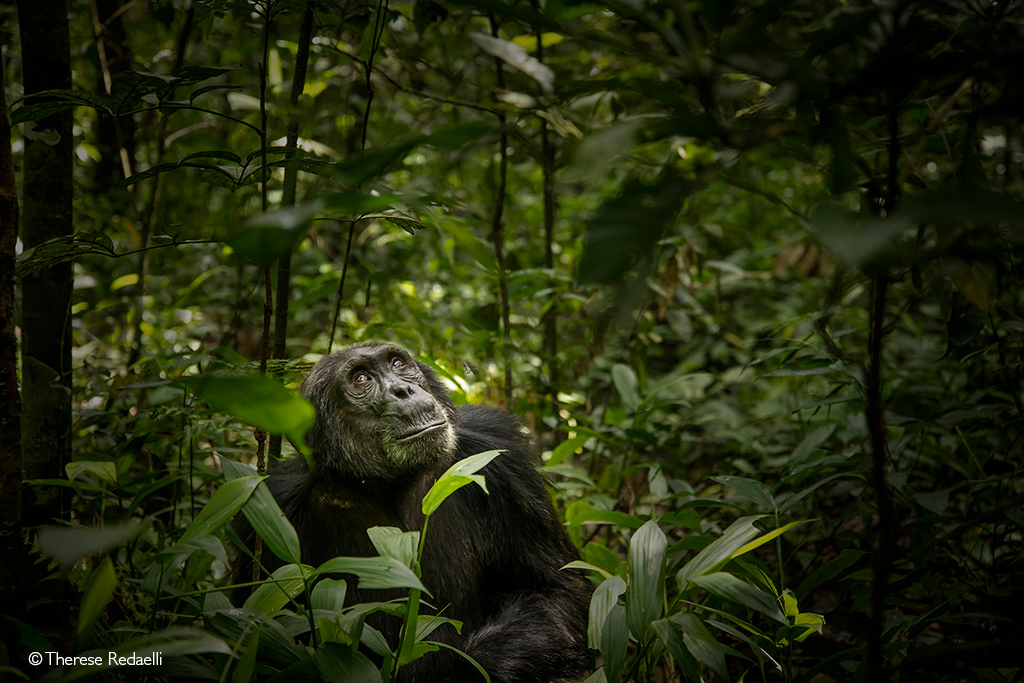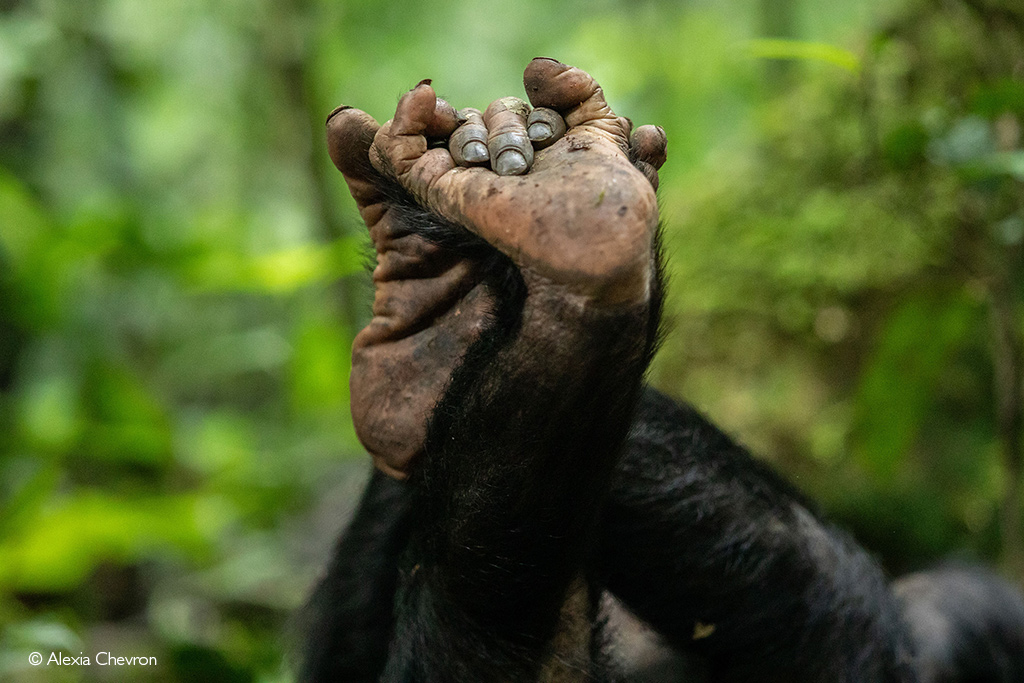
In the vast tapestry of the animal kingdom, few creatures mirror our own existence as closely as chimpanzees. Chimpanzees have long been known for their sophisticated social structures and behavioural traits. However, until now, the nuances of their communicative practices remained largely unexplored. New findings from a groundbreaking study illuminate the striking similarities between chimpanzee and human interactions, revealing that the conversational dynamics that define our species may extend far into the primate lineage. Rene de Klerk considers recent research findings.
Chimpanzees, as our closest living evolutionary cousins, have long offered a unique window into humankind’s ancestral nature and origins. Sharing over 98% of our DNA, these intelligent primates exhibit brain structures, behaviours and social aptitudes closely resembling our own. However, one domain seemingly separating the two species is communication – with chimpanzees lacking human language’s complexity and the ability to communicate through language.
New research now reveals our links to chimpanzees may run even deeper than previously thought. In the largest-ever study of chimpanzee conversation, scientists monitored and analysed thousands of gestures exchanged between individuals across multiple populations. What they found showed that interactions between chimpanzees are not that much different from interactions between humans.
One aspect that drew interesting conclusions is the examination of conversational structure. In most cases across many different cultures, humans take turns to communicate during social situations, typically leaving an average of 200 milliseconds between the end of a sentence and a response to the statement. The transition time between these responses also differs between different cultures. A study published by the Max Planck Institute for Psycholinguistics in 2009 confirmed that the Danish took 469 milliseconds to respond while Japanese speakers respond very fast, only waiting seven milliseconds before answering.

The researchers from the University of St Andrews in Scotland and colleagues have found that chimpanzees communicate similarly, showing the same conversational structures as humans between their gestures. While chimpanzees do not use spoken language, they use gestures. The team found that, on average, chimpanzees responded to each other with gestures within 120 milliseconds.
The team also wanted to know whether there were differences in communication patterns between different groups, like in human cultures. As a result, they conducted the research across various communities. The study observed five wild East African chimpanzee communities in Uganda and Tanzania. Data collection involved extensive video recording to capture a comprehensive view of gestural communication. Some communities studied were from Uganda – the Sonso and Waibira chimpanzee communities from Budongo Central Forest Reserve, and the Kanyawara community from Kibale National Park. Chimpanzees in the Kalinzu and Issa communities represented Tanzania.

They found that the timing was largely consistent and overlapping across various chimpanzee communities but showed some group differences, just like the cultural variation shown in response timing across human languages.
Collection periods and methods varied depending on the specific community. For Sonso, Waibira and Issa, an ad libitum or naturalistic approach aimed to capture any gestural exchanges observed. When it came to the Kalinzu community, the team focused on following one individual chimpanzee for 30-minute targeted periods to witness gestures. The longest video clips for the study came from the Kanyawara chimpanzee community, where researchers prioritised 15-minute sessions focused on one chimp, seeking to document multimodal forms of communication.
According to Dr. Gal Badihi from the School of Biology at St Andrew’s, who was also the research paper’s lead author, the results were not entirely unexpected. “We already know that animals, including chimpanzees, can take turns. Given that they are so closely related to humans and they have to communicate in similar social contexts it makes sense that the same strategy would evolve in both species,” he explained.

However, for Badihi, the biggest surprise was just how quickly the turn-transitions were and that they were so consistent between groups and close to human timing. He said it was also interesting that the researchers found some minor variation between groups, with the Sonso community in Uganda being a little slower to respond than the other groups. This also matches cultural variation between human groups who speak different languages.
The research was relatively extensive and time-consuming, involving more than 250 chimpanzees across different communities. The team collected more than 8,500 recorded gestures. All of this information required analysis, which was a challenge in itself. “This took years and many people to collect enough video data that recorded the gestural interactions and more years to code all the necessary information to compare the different groups. It was a massive collaborative effort,” explained Badihi.

Some key findings included that 14% of interactions involved a back-and-forth exchange of gestures between two chimps. Many of these sequences contained two or more turns at quick intervals, similar to the rapid-fire structure of conversational exchange seen in human language.
The study presents fascinating new insights into primate communication and behaviour, suggesting that chimpanzee interactions share evolutionary roots and mechanisms with human language development.
 Want to see chimpanzees on an African safari? Check out our chimpanzee-trekking safaris here, or let our travel experts plan the perfect African safari for you by clicking here
Want to see chimpanzees on an African safari? Check out our chimpanzee-trekking safaris here, or let our travel experts plan the perfect African safari for you by clicking here
As a chimpanzee lover, Badihi says there could definitely be further studies on the chimpanzees.
“We hope to see exactly when chimpanzees exchange gestures instead of just responding with a behaviour. This is interesting because, in most gestural interactions, only one individual uses gestures to make a request.” As an example, requests made through gestures, such as “give me food”, “let’s groom”, and “go away” would be met by the other individual (the recipient) responding with the requested behaviour. Badihi says their findings did not confirm if the recorded gesture-to-gesture exchanges are a type of negotiation clarification or if these indicate conflicting requests.
This groundbreaking study enhances our understanding of chimpanzee communication and bridges the evolutionary gap between humans and our closest relatives. By recognising the intricacies of gesture-based interactions among chimpanzees, we gain valuable insights into the evolutionary origins of our own social behaviours. As we continue to explore the depths of primate communication, we may uncover even more parallels that highlight the rich tapestry of life shared by humans and chimpanzees, emphasizing the importance of conserving these remarkable creatures and their habitats for future generations.
Reference
Fröhlich, M., Gerstner, C., Machanda, Z. P., Lutkin, P., Onyango, P. O., Wittig, R. M., & Hobaiter, C. (2024). Primate turn-taking: Conversations among wild chimpanzees reveal similarities with human interaction. Current Biology, 34(19), 4178-4186.
Further reading
- Chimpanzees live in western and central African primary and secondary woodlands and forests, farmland and fallow oil palm plantations. They are the smallest of the great apes and our closest living relative. Read more about chimpanzees, our forest kin, here.
- A gallery of fantastic images of chimpanzees – in honour of our fellow great ape. Images submitted by our Photographer of the Year entrants. Check out our gallery celebrating chimpanzees here
To comment on this story: Login (or sign up) to our app here - it's a troll-free safe place 🙂.![]()






